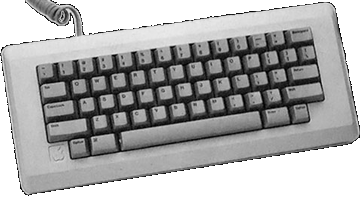MacBook

Essentials
Family: MacBook
Codename: ?
Gestalt ID: 406
Minimum OS: 10.4.6
Maximum OS: 10.6.8
Introduced: May 2006
Terminated: November 2006
Processor
CPU: Intel Core Duo (T2xxx)
CPU Speed: 1.83/2.0 GHz
CPU Cores: 2
FPU: integrated
Bus Speed: 667 MHz
Register Width: 32-bit
Data Bus Width: 32-bit
Address Bus Width: 32-bit
Level 1 Cache: 32 kB data, 32 kB instruction
Level 2 Cache: 2 MB on-processor
ROM: EFI
RAM Type: PC2-5300 SO-DIMM
Minimum RAM Speed: 667 MHz
Onboard RAM: 0 MB
RAM slots: 2
Maximum RAM: 2 GB
Video
Screen: 13.3" active matrix TFT
GPU: Intel GMA950
VRAM: 64 MB shared (see notes)
Max Resolution: 1280x800
Video Out: mini-DVI
Camera: iSight
Storage
Hard Drive: 60/80 GB 5400 RPM (w/SMS) (100/120 GB 5400 rpm BTO)
ATA Bus: Serial-ATA
Optical Drive: 24x/24x/10x/8x/4x/4x CD-RW/DVD±RW
Input/Output
USB: 2 2.0
Firewire: 1
Audio Out: stereo 24 bit mini, Optical S/PDIF
Audio In: stereo 24 bit mini, Optical S/PDIF
Speaker: stereo
Microphone: mono
Networking
Ethernet: 10/100/1000BaseT
Wi-Fi: 802.11b/g
Bluetooth: 2.0+EDR
Miscellaneous
Power: 60 Watts
Dimensions: 1.08" H x 12.78" W x 8.92" D
Weight: 5.2 lbs.

Notes
The MacBook's graphics chipset used a portion of main memory as VRAM. Though reported as a 64 MB graphics system, the chipset actually used a minimum of 80 MB of RAM, resulting in a maximum of 432 MB of RAM available for system use in the base system.
Announced in May 2006, The MacBook replaced the existing 12- and 14-inch iBooks and 12-inch MacBook Pro: a dual core Intel Core Duo processor, a faster 667 MHz bus speed, a faster and larger Serial-ATA hard drive, an integrated iSight camera, a MagSafe power adaptor, and a bundled remote control with Apple's Front Row Software. It also included some features previously found only on Apple's professional laptops: optical audio in/out, a DVI port capable of monitor-spanning, and Gigabit Ethernet. Two features unique to the MacBook were a magnetic latching system with no moving parts, and a resigned recessed keyboard. One potential drawback to the new MacBook was that its graphic chipset used a portion of main memory, resulting in less RAM available for system tasks. This was offset, however, by the MacBook's two RAM slots, which allowed the installation of up to 2 GB of memory.
The MacBook shipped in three configurations. The low-end model, with a 1.83 GHz Core Duo processor, 512 MB of RAM, a 60 GB hard drive, and a CD-RW/DVD-ROM Combo Drive, sold for $1,099. The middle-end model, with a 2.0 GHz Core Duo processor, 512 MB of RAM, a 60 GB hard drive, and a CD-RW/DVD±RW SuperDrive, sold for $1,299. Finally, a high-end model shipped in a black case (the first black Apple portable in more than five years). It improved upon the middle-end model with an 80 GB hard drive, and sold for $1,499. All models were replaced in November 2006 by the Mac Book (Late 2006).
Picture Credits:
Apple, Inc.
